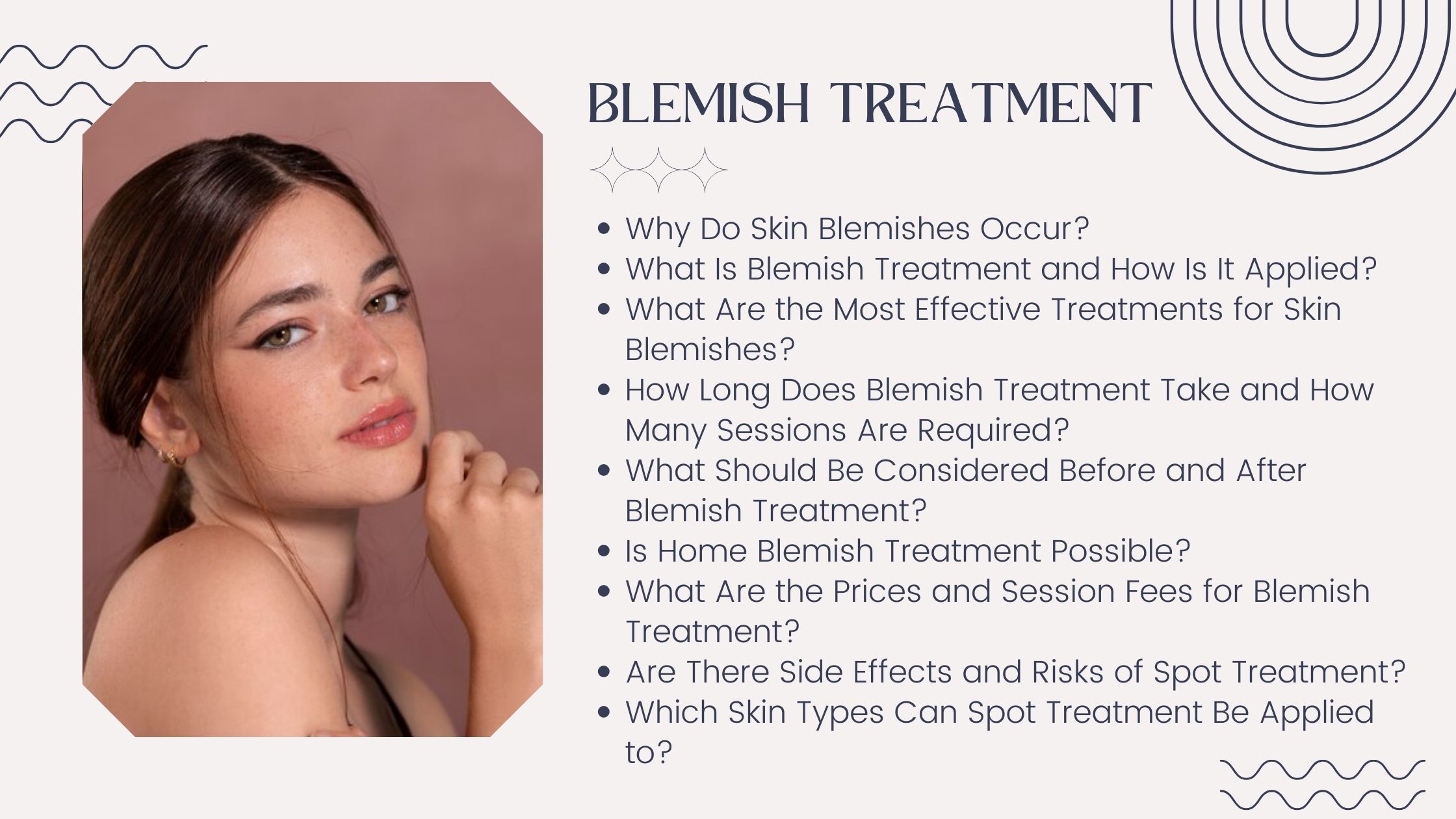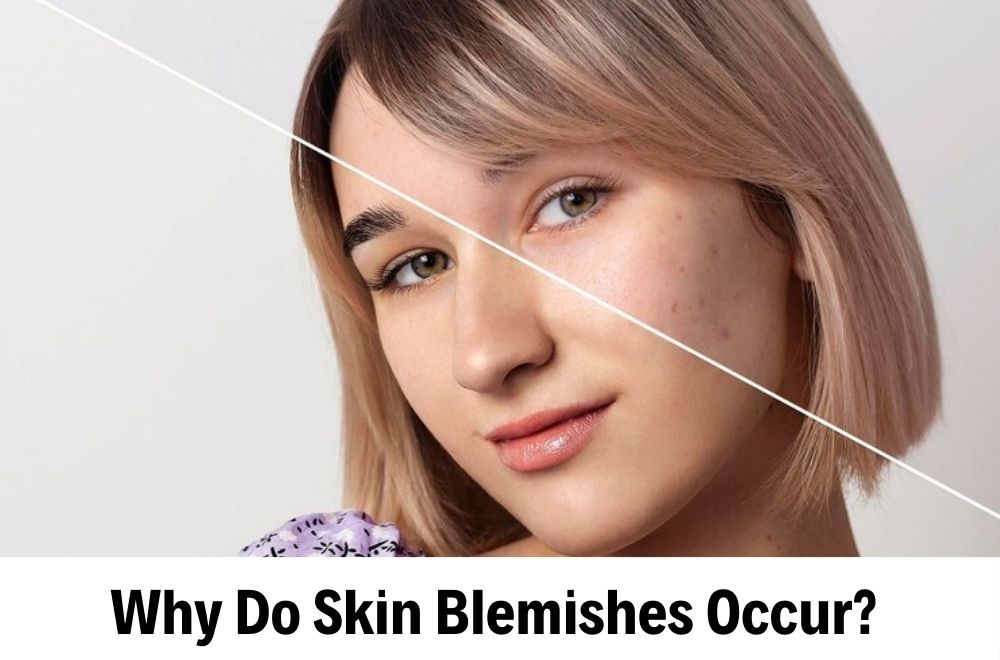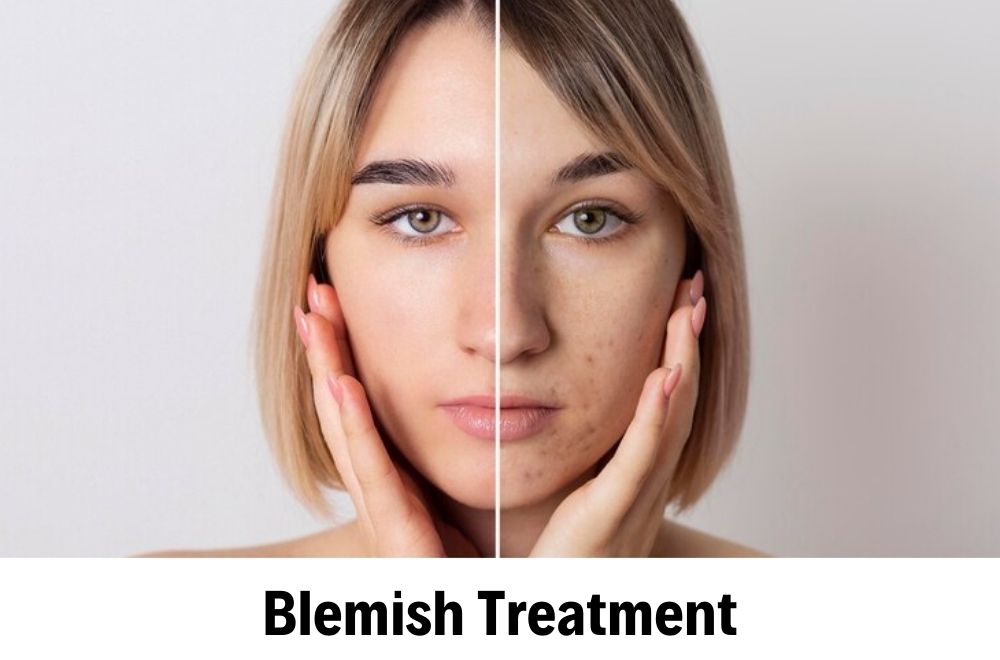Hello,
How Can We Help You?
Contact Form
Fill in the form and we will contact you as quickly as possible.
Contact us on Whatsapp
Scan with your camera app or click the QR code to start a conversation.



Skin blemishes can be triggered by various factors that affect melanin production in the skin. Exposure to sunlight is one of the most common causes of blemishes. Ultraviolet (UV) rays can stimulate melanin production, causing dark spots on the skin. Other causes of blemishes include:
Hormonal Changes: Hormonal changes such as pregnancy, menopause, and thyroid diseases can lead to skin blemishes.
Aging: As we age, melanin-producing cells become less active, which can cause age spots to form on the skin.
Certain Medications: Some medications, such as birth control pills, antibiotics, and antidepressants, can cause skin blemishes.
Skin Trauma: Injuries such as cuts, burns, or trauma to the skin can cause blemishes as they heal.
Certain Dermatological Diseases: Some dermatological conditions like eczema and psoriasis can cause skin blemishes.

Blemish treatment is a series of procedures used to lighten or remove dark spots on the skin. The treatment method varies depending on the type, size, and depth of the blemish. The most common blemish treatment methods include:
Laser Treatment: There are various laser treatments available to treat different types of skin blemishes. Laser light helps to lighten or remove blemishes by breaking down the melanin pigment that causes the spot. Laser treatment is usually applied in several sessions, and side effects such as redness and crusting may occur after the procedure.
Chemical Peeling: Chemical peeling helps to lighten the appearance of blemishes by peeling off the upper layers of the skin. Chemical peels can be performed using various chemicals such as glycolic acid, salicylic acid, and lactic acid. Chemical peels are usually applied in several sessions, and side effects such as redness, peeling, and sensitivity may occur after the procedure.
Microdermabrasion: Microdermabrasion is a procedure that helps to lighten the appearance of blemishes by abrading the upper layers of the skin. Microdermabrasion is performed by spraying small crystals or using a diamond-tipped device on the skin. Microdermabrasion is usually applied in a single session, and side effects such as redness and sensitivity may occur after the procedure.
Blemish Lightening Creams: Blemish lightening creams help to lighten the appearance of blemishes by reducing melanin production in the skin. Blemish lightening creams may contain various active ingredients such as hydroquinone, kojic acid, and azelaic acid. Blemish lightening creams are usually used long-term, and side effects include skin irritation, redness, and sensitivity.
The most effective treatment method for skin blemishes depends on the type of blemish and the patient's skin type. Your dermatologist will examine your skin and recommend the most suitable treatment method based on the type and characteristics of the blemish.
For some types of blemishes, a single treatment method may be sufficient, while for other types, a combination of multiple treatment methods may be necessary. For example, laser treatment can be combined with blemish lightening creams, or chemical peeling can be combined with microdermabrasion.
The duration and number of sessions required for blemish treatment depend on the type, size, and depth of the blemish, the treatment method used, and the patient's skin type.
Mild blemishes: Mild blemishes can usually be significantly lightened or completely removed with 2-4 treatment sessions.
Moderate blemishes: Moderate blemishes may require 4-6 treatment sessions.
Dark and stubborn blemishes: Dark and stubborn blemishes may require 6 or more treatment sessions.
Generally, there is a 2-4 week interval between each session. This period is necessary for the skin to heal and for the side effects of the treatment to subside.
The results of blemish treatment are permanent, but exposure to sunlight can cause blemishes to reappear. Therefore, it is very important to protect yourself from the sun after blemish treatment. You should use high-factor sunscreen, wear a hat and sunglasses, and avoid going outside during the hours when the sun's rays are the strongest.

Some important points to consider before and after blemish treatment are:
Consult your doctor: It is important to consult a dermatologist and have your skin examined before starting blemish treatment. Your doctor will determine your skin type and the type of blemish and recommend the most suitable treatment method for you.
Protect yourself from the sun: It is important to protect yourself from the sun for at least 2 weeks before starting blemish treatment. You should use high-factor sunscreen, wear a hat and sunglasses, and avoid going outside during the hours when the sun's rays are the strongest.
Stop certain medications: Some medications can reduce the effectiveness of blemish treatment or cause side effects. It is important to inform your doctor of any medications you are taking before starting blemish treatment and not to stop or start any medication without your doctor's approval.
Avoid makeup: It is recommended to avoid wearing makeup or to wear very light makeup for at least 1 week before starting blemish treatment.
Protect yourself from the sun: It is very important to protect yourself from the sun after blemish treatment. You should use high-factor sunscreen, wear a hat and sunglasses, and avoid going outside during the hours when the sun's rays are the strongest.
Skin care: After blemish treatment, it is important to treat your skin gently and use the skin care products recommended by your doctor.
Be patient: Blemish treatment can take time, and it is important to be patient. You should not expect immediate results.
Monitor side effects: If you experience any side effects after blemish treatment, it is important to inform your doctor.
Some mild skin blemishes can be treated at home with blemish lightening creams and masks. However, home treatment is usually not effective for darker and more stubborn blemishes. For the best results in blemish treatment, it is recommended to consult a dermatologist.
The prices for blemish treatment vary depending on the type, size, depth of the blemish, the treatment method used, the number of sessions, and the location of the clinic.
Blemish treatment is a medical procedure and is not covered by social security. Before undergoing blemish treatment, it is important to research prices and choose the clinic that offers the most suitable price for you.
Spot treatment is generally a safe procedure, but it can cause some side effects and risks. The most common side effects are the following:
Redness: Redness, swelling and tenderness in the treated area are the most common side effects. These side effects are usually mild and go away on their own within a few days.
Crusting: After some treatments such as laser treatment or chemical peels, crusting of the skin may occur. The crusting usually falls off spontaneously within a few days.
Scarring: Scarring may rarely occur after spot treatment. The risk of scarring varies depending on the type, size and depth of the spot, the treatment method used and the patient's skin type.
Infection: In rare cases, infection may occur after spot treatment. The risk of infection can be influenced by factors such as the patient's weak immune system or non-compliance with hygiene rules during the procedure.
Hypopigmentation: Skin discoloration (hypopigmentation) may occur after spot treatment. The risk of hypopigmentation may be affected by factors such as dark skin color or the use of certain medications.
Hyperpigmentation: Darkening of the skin (hyperpigmentation) may occur after spot treatment. The risk of hyperpigmentation can be influenced by factors such as dark skin color or exposure to sunlight.
The risks of spot treatment are generally low. However, it is important to tell your doctor if you experience any side effects or risks.
Spot treatment can be applied to all skin types. However, some skin types may experience more side effects than others. For example, those with dark skin have a higher risk of hypopigmentation or hyperpigmentation after spot treatment.
Before having a spot treatment, it is important to inform your doctor about your skin type and the type of spot. Your doctor will recommend the most appropriate treatment for your skin and take the necessary precautions to minimize the risk of side effects.
We'd love to hear from you. Please fill out the form.
Contact Form
Fill in the form and we will contact you as quickly as possible.
Contact us on Whatsapp
Scan with your camera app or click the QR code to start a conversation.